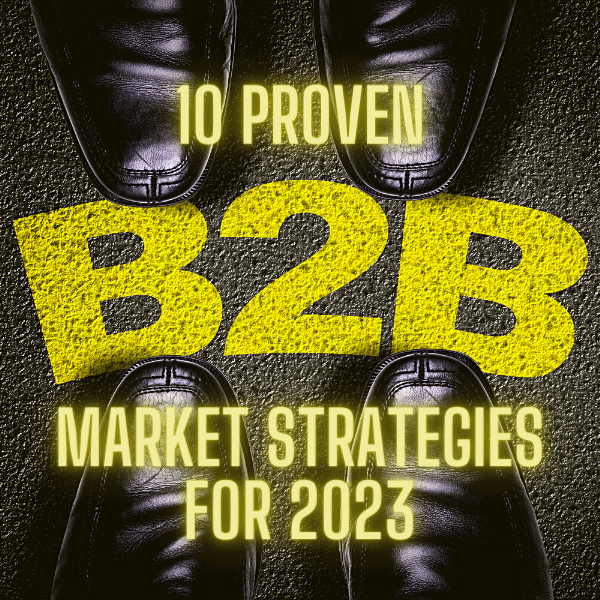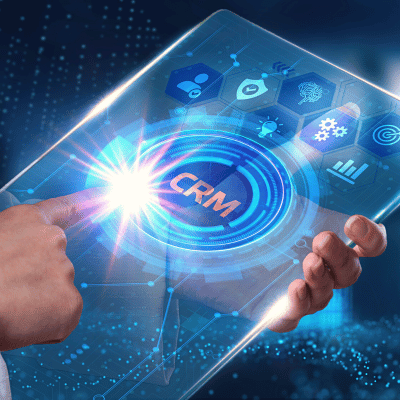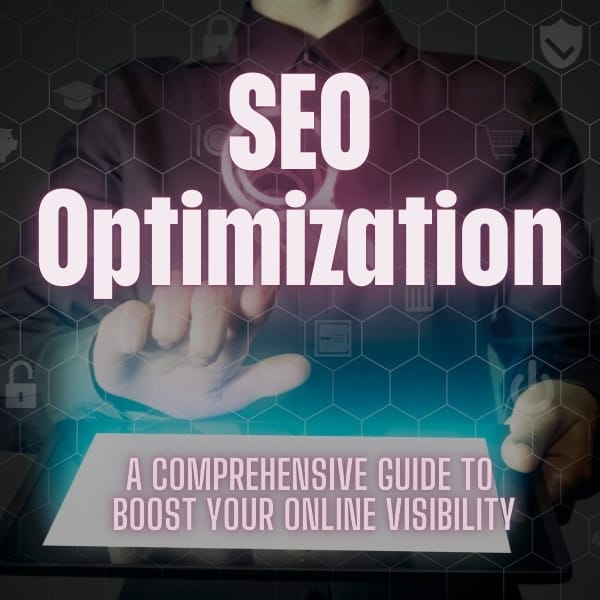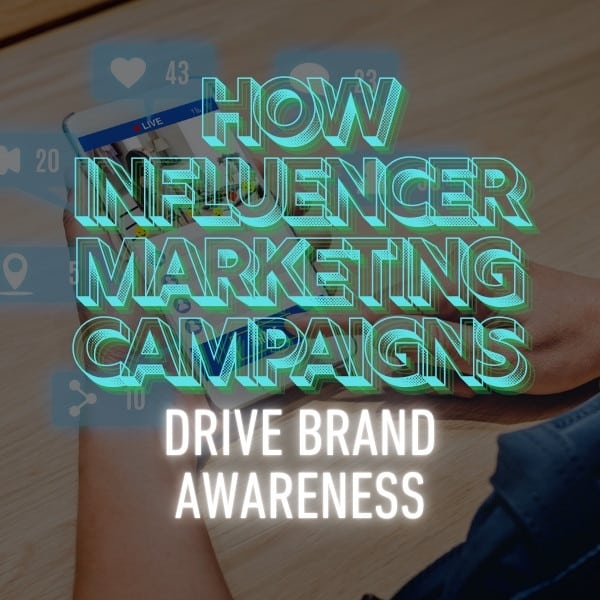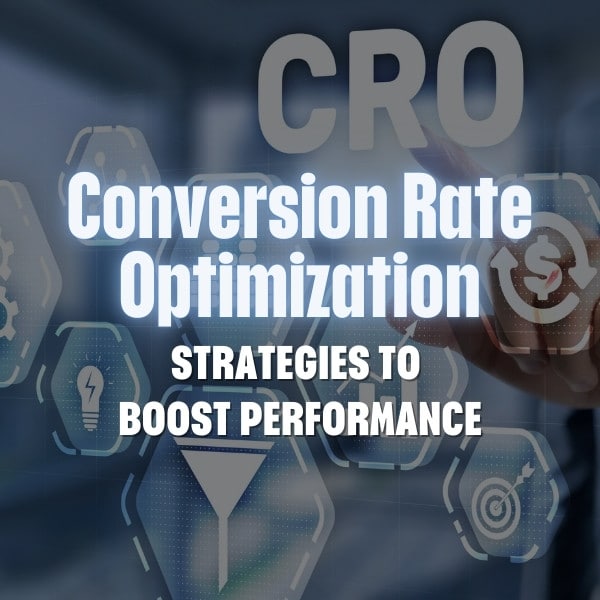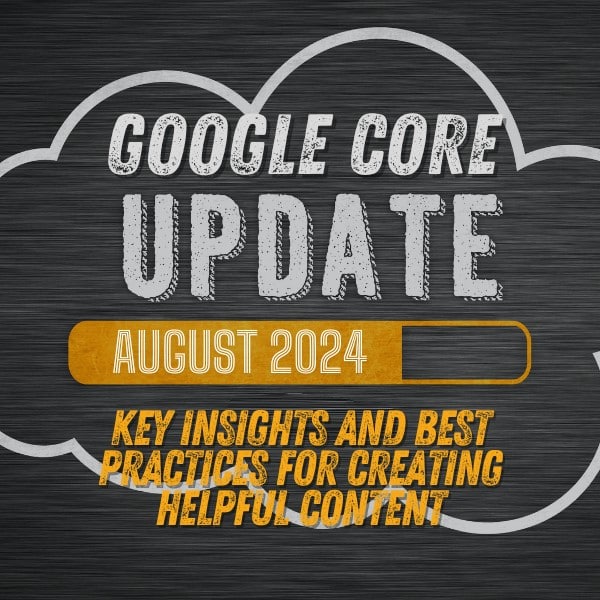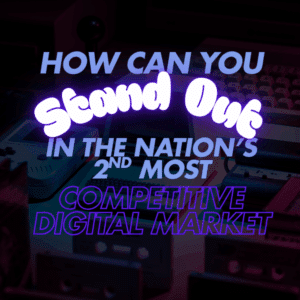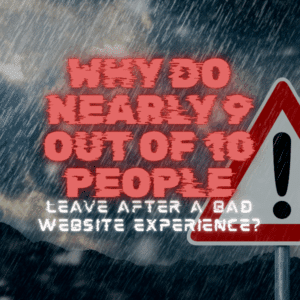Why you can trust Sunlight Media
- Expertise and Experience:Our content is crafted by seasoned professionals with extensive experience in digital marketing, ensuring you receive accurate and actionable advice.
- Unbiased Information:We provide impartial insights and recommendations based solely on what's best for your business, without any hidden agendas or promotions.
- Thorough Research:Our articles are backed by comprehensive research and the latest industry trends, ensuring you stay informed with reliable and up-to-date information.
- Transparency and Honesty:We believe in complete transparency. We disclose our sources, methodologies, and any potential conflicts of interest, so you can trust the integrity of our content.
- Continuous Improvement:We constantly review and update our content to reflect the latest developments in digital marketing, so you always have access to the most current and relevant information.

In today’s increasingly competitive landscape, B2B marketers face the challenge of standing out and capturing the attention of potential customers. But fear not, for we have compiled the ultimate guide to help you navigate this complex world and supercharge your B2B marketing strategies for global markets. Get ready to embark on a journey that unveils the secrets of understanding the market landscape, defining your target audience, setting SMART goals, and executing a multichannel marketing strategy that drives results.
Key Takeaways
- Understand B2B Market Landscape & Industry Trends
- Define Target Audience/Ideal Customer Profile, Identify Pain Points & Needs
- Set SMART Goals and Measure Performance for Optimization
- Develop Multichannel Strategy with Content Marketing, Email, Social Media Ads etc.
- Strengthen Relationships through Personalized Communication & Loyalty Programs
Understanding the B2B Market Landscape
In the distinctive sphere of B2B marketing, grasping the market landscape is the linchpin of success. This understanding lays the foundation for creating and implementing marketing strategies that connect with prospects throughout their purchasing journey.
So, how does one gain this valuable insight? The answer lies in three key areas: industry trends, competitor analysis, and opportunity identification.
Industry Trends
For any B2B marketer striving for flexibility and quick adaptation to an ever-changing world and industry, staying updated with industry trends is imperative. By staying updated on trends such as hybrid working models, virtual events, and video marketing, you can adapt your marketing strategies accordingly and ensure you stay ahead of the curve.
Keeping your finger on the pulse of the industry not only helps you monitor B2B data more effectively, but also enables you to make well-informed decisions that positively impact your marketing efforts.
Competitor Analysis
Competitor analysis represents another significant element in getting a grip on the B2B market landscape. By assessing competitors’ strengths, weaknesses, opportunities, and threats, you can make informed decisions about how to best compete with them and select appropriate channels.
This knowledge empowers you to identify their unique selling points and capitalize on areas where they may be underperforming. With a clear understanding of your competitors, you can tailor your marketing strategies to outshine them and attract your target audience more effectively.
Opportunity Identification
Spotting market opportunities paves the way for business growth and the exploitation of untapped potential. For example, Adobe has successfully leveraged TikTok to engage with its audience by:
- Creating content tailored to the platform’s users
- Collaborating with popular TikTok creators, such as @emilesam, to showcase their products
- Showcasing unique and creative uses of their software, such as creating a fighting sequence against oneself using Adobe’s After Effects
By utilizing TikTok, Adobe has been able to reach a wider audience and showcase the capabilities of their products in a fun and engaging way.
By being proactive and exploring various channels, strategies, and tools, you can maximize leads and customer funnels, ultimately driving your business forward.
Defining Your Target Audience and Ideal Customer Profile
Defining your target audience and ideal customer profile is a prerequisite for crafting marketing strategies that truly engage your audience. By doing so, you can ensure that your marketing efforts are focused and relevant, ultimately leading to better results and a higher return on investment.
In B2B marketing, the process of defining your target audience involves:
- Specifying your target market
- Using firmographic data to identify potential target companies
- Using demographic and psychographic data to identify individual prospects
Once you have a clear understanding of your target audience, you can then focus on specialization and niche targeting, which are key considerations for B2B marketing success.
Buyer Personas
The creation of buyer personas is a significant step towards deciphering your customers’ needs and preferences. These comprehensive depictions of your target customers, based on market analysis and factual data regarding customer demographics and behavior, help marketers comprehend how customers make purchase decisions and which marketing channels they are more likely to use.
By creating detailed profiles of each customer segment, you can tailor your marketing strategies to better resonate with your audience, ultimately leading to increased engagement and conversions.
Pain Points and Needs
Recognizing your customers’ pain points and needs is key to forming impactful marketing messages that tackle these issues head-on. A common misstep B2B organizations make is attempting to educate the buyer on their own company, product, or service before they have a grasp of their problem.
By recognizing pain points and addressing them in your marketing messages, you can provide value to your customers and present solutions to their persistent problems.
Segmentation and Personalization
B2B marketers can use segmentation and personalization as potent instruments to tailor their strategies to distinct customer groups, thereby guaranteeing effective message transmission. By segmenting customers based on factors such as:
- industry
- size
- location
- needs
You can create more tailored and efficient marketing campaigns with the help of marketing automation.
Additionally, the data collected can be used to optimize your website and other digital channels for each customer segment, resulting in a more personalized experience for your audience.
Setting SMART B2B Marketing Goals
Establishing SMART (Specific, Measurable, Achievable, Relevant, Time-bound) B2B marketing goals is an established approach that guarantees success. When you establish actionable goals, you enable your team to optimize their performance and monitor B2B marketing metrics and KPIs more effectively.
So, what does it take to set SMART goals? Let’s dive into each aspect of this goal-setting framework.
Specific Goals
Formulating specific goals is key to offering a clear direction for your marketing initiatives. By employing the best practices for setting specific goals, such as utilizing the SMART goal-setting framework and writing down your goals, you make them more tangible and easier to follow.
Furthermore, ensuring that your goals are realistic and achievable, as well as providing context and communicating the purpose behind them, helps to keep your team motivated and on track to achieve success.
Measurable Metrics
The use of pertinent metrics to measure your marketing performance is vital to assess the efficacy of your strategies and make decisions rooted in data. By tracking metrics such as:
- Website traffic
- Lead generation
- Customer acquisition
- Customer retention
You can gain valuable insights into the effectiveness of your marketing efforts and make necessary adjustments to optimize your campaigns.
By understanding the performance of your marketing campaigns, you can identify areas of improvement and make changes.
Achievable Targets
Establishing attainable targets is a major influence in inspiring your team and steering results. By taking into account the resources available, the timeline, and the desired result, you can establish targets that are both realistic and attainable.
Furthermore, setting measurable objectives that can be tracked and monitored helps to ensure that your marketing team stays on track and focused on achieving your marketing goals.
Relevant Objectives
The alignment of your objectives with your broader business goals is a prerequisite for the triumph of your marketing strategies. By establishing relevant objectives, you can guarantee that your marketing efforts are focused on the areas that matter most to your business and have the greatest potential for generating results.
Time-bound Deadlines
Establishing deadlines is imperative for maintaining the trajectory of your marketing efforts and ensuring that your team remains organized and fixated on goal attainment. By formulating a timeline for your marketing activities and breaking it down into manageable tasks, you can set realistic deadlines that take into account any potential delays or obstacles.
Regularly reviewing and adjusting your deadlines as needed helps to keep your team motivated and on track to achieve success.
Developing a Multichannel B2B Marketing Strategy
Given the digital nature of today’s world and the growing importance of digital marketing, adopting a multichannel B2B marketing strategy has never been more important. This approach involves using a combination of various marketing channels, including:
- Content marketing
- Email marketing
- Social media marketing
- Paid advertising
- SEO
- SEM
To reach your target audience efficiently.
By engaging your audience through multiple channels, you can increase your chances of capturing their attention and converting them into customers.
Content Marketing
Content marketing is a potent tool for positioning your brand as an industry authority and fostering trust among your audience. By providing high-quality, educational content that addresses the needs and pain points of your target audience, you can demonstrate your knowledge and help users make more informed decisions.
For example, the Shopify Masters podcast has successfully utilized content marketing to engage with their audience and provide valuable insights into the world of e-commerce. By consistently delivering relevant and helpful content, you can establish a strong brand identity and build brand awareness in your industry just like MGK Asia did.
Email Marketing
In the B2B domain, email marketing serves as an effective medium for personalized communication and lead nurturing. By leveraging email marketing, you can send tailored messages to your audience and guide them through the buying process.
Additionally, data collection and analysis, A/B testing, and ROI measurement are all essential for optimizing email marketing performance and ensuring that your campaigns resonate with your audience and generate results.
Social Media Marketing
Social media platforms, also known as social media channels, present an unmatched chance to interact with your target audience and disseminate valuable content. By utilizing platforms such as LinkedIn, Twitter, and Instagram, you can interact with your target audience, understand their needs, and receive feedback on your products and services.
Moreover, social media advertising can be an effective tool to engage prospects, as it provides access to a wide audience and allows for enhanced targeting capabilities.
Paid Advertising
Allocating resources to paid advertising can assist in targeting particular customer segments and amplifying your brand’s visibility. By using platforms such as Google Ads and LinkedIn Ads, you can reach potential customers who are actively searching for products or services like yours, increasing your chances of capturing their attention and converting them into leads.
Paid search, in particular, enables targeting of prospects based on their exact interests at the precise moment they are interested, making it a powerful tool for generating leads and driving results.
SEO and SEM
Search engine optimization of your website is vital for enhancing organic traffic and visibility. By enhancing your website’s SEO, you can ensure that your business appears at the top of search results for relevant keywords, making it more likely for potential customers to find and engage with your brand on search engines.
Additionally, search engine marketing (SEM) involves utilizing paid advertising to increase your visibility in search engine results, further boosting your chances of reaching and engaging with your target audience.
Measuring and Optimizing B2B Marketing Performance
Measuring and optimizing your B2B marketing performance is necessary to fully leverage your marketing initiatives and maximize your return on investment. By tracking the success of your marketing strategies, you can identify areas for improvement and make data-driven decisions that lead to better results.
Data Collection and Analysis
For making enlightened marketing decisions, data collection and analysis is of utmost importance. By understanding the objectives and creating a plan for data collection, you can ensure that the data gathered is relevant and useful for achieving your desired outcome.
Additionally, documenting sources and conducting a thorough analysis of the data collected can help you uncover trends and patterns that can inform your marketing strategies and lead to better results.
A/B Testing
A/B testing serves as a valuable instrument for pinpointing the most fruitful marketing tactics. By comparing two versions of an email or landing page, you can determine which one performs better in terms of conversions and adjust your marketing efforts accordingly.
A/B testing allows you to:
- Refine your marketing activities
- Make decisions based on factual evidence rather than guesswork
- Ultimately lead to more successful campaigns
- Achieve a higher return on investment.
ROI Measurement
ROI measurement is paramount to confirm that your marketing initiatives are yielding results and generating a return on your investment. By calculating the return on investment for each marketing activity, you can evaluate the cost of the activity against the revenue generated.
Monitoring ROI over time allows you to recognize trends and make necessary adjustments to your marketing approach, ensuring that your strategies continue to provide the best possible results.
Strengthening Customer Relationships and Retention
In the fiercely competitive business environment of today, nurturing trust and loyalty among your customers has gained paramount importance. Through personalized communication, exceptional customer support, and loyalty programs, you can strengthen customer relationships and improve retention, ultimately leading to higher levels of customer satisfaction and loyalty.
By investing in customer relationships, businesses can create a loyal customer base that will continue to purchase.
Personalized Communication
Establishing personal-level communication with customers is crucial for fostering trust and loyalty. By leveraging customer data to create tailored messages for each individual customer, you can make your communications more meaningful and relevant, ultimately leading to increased engagement and conversions.
In addition, providing a personalized experience for your customers can help you stand out from your competitors and cultivate more meaningful relationships with your audience.
Customer Support
Offering outstanding customer support is vital for resolving concerns and enhancing customer satisfaction. Here are some strategies to achieve this:
- Respond promptly to customer inquiries.
- Offer tailored support based on each customer’s specific needs.
- Provide useful resources and solutions to address customer concerns. By implementing these strategies, you can ensure that your customers feel valued and well-supported.
This not only helps to improve customer satisfaction and loyalty, but also fosters a positive brand image, which can lead to increased word-of-mouth referrals and new business opportunities through referral marketing.
Loyalty Programs
The deployment of loyalty programs serves as an efficient method to reward and hold onto your most valued customers. By offering incentives and rewards for continued patronage, you can encourage customer loyalty and foster a sense of brand allegiance.
Loyalty programs can also help to increase customer engagement and generate more referrals, ultimately leading to increased sales and revenue for your business.
Collaborating with Strategic Partners
Partnering strategically can significantly broaden your outreach and elevate your marketing initiatives. By working alongside other companies that have existing relationships with your target audience, you can leverage their channels to promote your product or service and tap into new markets.
Co-marketing Campaigns
Jointly conducting marketing campaigns with other businesses that complement yours can aid in reaching new audiences and amplifying brand recognition. By pooling resources and expertise, both businesses can benefit from increased exposure and lead generation, ultimately leading to more successful marketing campaigns.
By identifying potential partners with compatible products or services and a shared target audience, you can create a mutually beneficial relationship that drives results for both parties.
Influencer Partnerships
Forming partnerships with influencers can bolster your brand’s credibility and visibility within your industry. By leveraging the credibility and reach of industry influencers, you can promote your products or services to a wider audience and generate leads more effectively through influencer marketing.
Be judicious when selecting influencer partnerships and conduct research to determine which influencers have the most genuine relationships with your target audience to ensure the most effective collaboration.
Summary
In conclusion, successfully navigating the complex world of B2B marketing requires a deep understanding of the market landscape, a well-defined target audience, SMART marketing goals, and a multichannel marketing strategy. By following the proven strategies outlined in this guide, you can supercharge your B2B marketing efforts, strengthen customer relationships, collaborate with strategic partners, and ultimately drive results for your business. So, go forth and conquer the B2B marketing world with confidence and expertise.
Frequently Asked Questions
What does B2B mean in marketing?
B2B marketing involves strategies used to target and promote a business’ products or services to other businesses or organizations.
Companies that sell to other companies are typically the ones using B2B marketing tactics.
What is an example of a B2B market?
B2B is a marketing strategy used by one business to target and sell to another business. Examples include manufacturing materials, clothing, car parts and semiconductors.
Monday.com’s B2B brand strategy on LinkedIn is also an example.
What are the 4 basic categories in B2B markets?
B2B markets can be divided into four distinct categories: producers, resellers, governments, and institutions.
This categorization helps to better understand the different types of business customers within these markets.
What is the difference between B2B marketing and B2C marketing?
B2B marketing focuses on selling to other businesses, while B2C marketing targets individual consumers.
The sales cycle for B2B is usually longer and involves more complex decision-making processes.
Why is it important to understand the B2B market landscape?
Understanding the B2B market landscape is critical for gaining insight into target audiences, recognizing industry trends and identifying potential opportunities, which are all key to successful B2B marketing.

